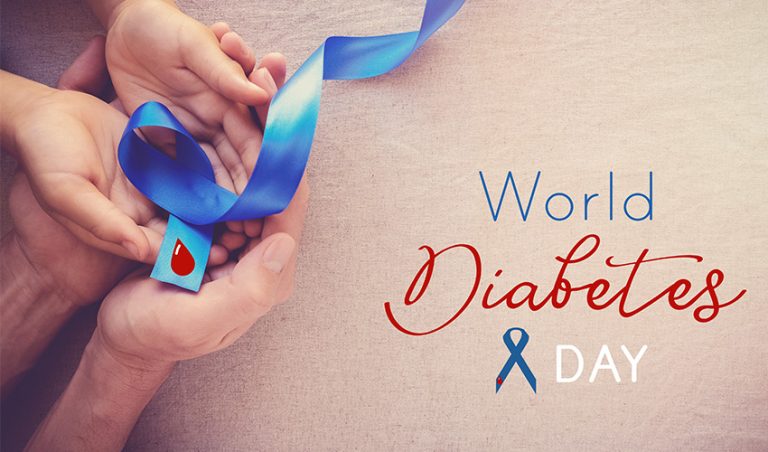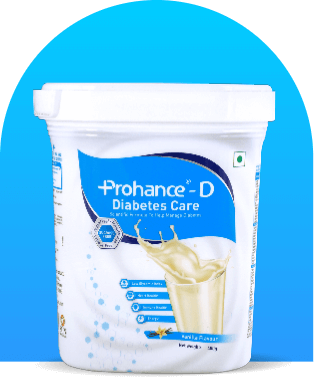
Diabetes affects the human body, like cancer. It is a long-term medical condition that affects how your body produces and utilises the hormone insulin, which regulates your blood sugar levels. Diabetes, if left untreated, can cause major health consequences such as heart disease, stroke, renal failure, and blindness.
Globally, over 463 million people have diabetes or show its symptoms. Every 1 out of 5 diabetic patients is Indian. World diabetes day recognises the perils of diabetes while spreading diabetes awareness through clinically designed education programmes. Observed on November 14th every year, World Diabetes Day strives to raise diabetes awareness and its effects. It provides an opportunity to educate people on the importance of early disease detection, prevention, and management.
Diabetes (type-2) is a lifestyle disorder with patients experiencing abnormal blood glucose levels in their late 30s. Some people experience symptoms of diabetes during childhood (type-1).
Diabetes remains undiagnosed for long periods because most patients lack awareness. Some patients leave it untreated because of expensive healthcare. People have little diabetes awareness, with 1 in nearly 14 people showing diabetes symptoms. Consumption of processed foods, sedentary lifestyle, unusual work-life stress, lack of self-care, etc., are popular contributors to the symptoms of diabetes mellitus.
Early diagnosis of high blood sugar and regular health check-ups help prevent diabetes from affecting the body. Embracing a holistic lifestyle keeps the blood sugar levels under control.
Diabetes varies according to the blood glucose levels, type of diabetes (type-1/type-2), and onset stage. The early symptoms of diabetes mellitus (type 2 diabetes) and type 1 diabetes have some of the same telltale signs. These include:
Polyuria (repeated urination)
The normal individual needs to pee between 4 and 7 times each day, but those who have diabetes may require far more. The reason is that, normally, the glucose is reabsorbed by the body as it travels through the kidneys. However, when diabetes elevates blood sugar levels, your kidneys may be unable to pull it all back in. Thus, causing the body to make more urine, which requires fluids. As a consequence, you’ll have to go more often. You might also urinate more.
Polydipsia (recurrent thirst)
Since you are urinating so much, you could get quite thirsty.
Excessive hunger
The body transforms the food that you eat into sugar, which the cells use as energy. However, in order for your cells to absorb glucose, they require insulin. If the body does not produce sufficient or no insulin at all, or if the cells resist the hormone insulin that the body produces, glucose cannot enter them, and you do not have energy. This can increase your hunger.
Tiredness and fatigue
A low level of glucose and insulin can make you feel less energetic than usual.
Abnormal weight loss
If your body fails to get enough energy from food, it will begin to burn muscle and fat. You can drop weight even if you remain consistent with your eating habits.
Blurred vision
Your eyes’ lenses may swell as your body’s fluid levels change. They would subsequently change shape and lose focus.
Delayed healing of sores
An elevated blood sugar level can cause damage to nerves and blood vessels, impeding blood circulation. Therefore, even minor wounds, cuts, and sores may require several weeks to months to heal. Slow healing of wound raises the chance of infection.
Dry mouth
Since the body uses fluids to produce urine, there is less moisture available for other tasks. Patients can get dehydrated, and the mouth might feel dry.
Dry, itchy skin
The skin may also feel dry and start to itch.
Other symptoms of diabetes mellitus can include:
Early signs of diabetes type 1 in Children
Diabetes type 1 can occur at any age, but it most commonly affects children between the ages of 5 years and 6 years and 11 years and 13 years. Researchers believe this is because of hormones during these ages. Symptoms include:
Although adults are more inclined to develop diabetes type 2, the condition is becoming increasingly prevalent in children due to obesity. The child may not exhibit any of the signs of the conditions, but here are several to watch for:
Diabetes is dangerous if left untreated. The gradual proliferation of blood sugar levels thickens the blood lowering clotting potential. It shrinks the general immune response as the diabetic person becomes susceptible to fungal infections and skin diseases.
As the condition advances, the patient suffers from internal organ complications like kidney failure and poor healing of wounds. Diabetic retinopathy (loss of vision) worsens the quality of life while the patient may succumb after contracting septicaemia, which is a severe bloodstream infection.
Both type-1 (juvenile-onset) and type-2 (adult-onset) diabetes are treatable conditions. The key challenge is to lead a lifestyle that keeps your blood sugar level normal. A diabetic patient can lead a healthy life with the following diabetes lifestyle routine:
Control your spiked blood glucose with precautionary measures like a diabetic diet, preventive lifestyle and daily exercises. It’s vital to consume the right food while not triggering your blood sugar. Prohance D is a scientifically designed protein powder for diabetics having a balanced proportion of calories and essential nutrients.
Available in two assorted flavours (chocolate and vanilla), Prohance D is a perfect dietary alternative to fight diabetes mellitus.
Disclaimer: This article attempts to spread awareness amongst people against the mentioned condition. It has no intentions to recommend or promote any specific product. Always consult your doctor before trying this health supplement.
